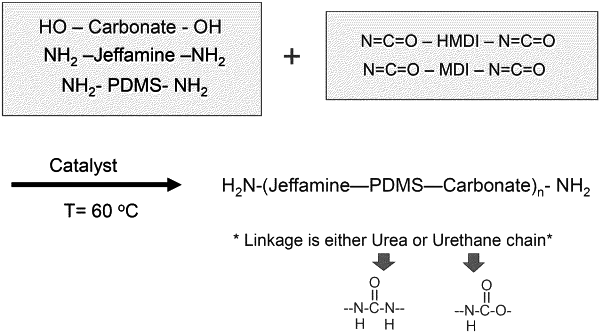| CPC A61B 5/14865 (2013.01) [A61B 5/14532 (2013.01); A61B 5/686 (2013.01); C08G 18/3228 (2013.01); C08G 18/4009 (2013.01); C08G 18/44 (2013.01); C08G 18/5024 (2013.01); C08G 18/61 (2013.01); C08G 18/72 (2013.01); C08G 18/724 (2013.01); C08G 18/73 (2013.01); C08G 18/7671 (2013.01); C08L 75/12 (2013.01); A61B 5/6876 (2013.01); A61B 2562/125 (2013.01); C08G 77/448 (2013.01); C08G 77/458 (2013.01)] | 8 Claims |

|
1. A method of making an analyte sensor for implantation within a mammal comprising the steps of:
providing a base layer;
forming a conductive layer on the base layer, wherein the conductive layer includes a working electrode;
forming an analyte sensing layer on the conductive layer, wherein the analyte sensing layer includes an oxidoreductase;
forming an analyte modulating layer on the analyte sensing layer, wherein the analyte modulating layer:
(a) is formed by a reaction mixture comprising:
from 17% to 23% weight percent hexamethylene diisocyanate;
from 0% to 8.5% weight percent methylene diphenyl diisocyanate;
from 14% to 48% weight percent polydimethylsiloxane having amino terminal groups; and from 7.5% to 19% weight percent poly(1,6-hexyl carbonate) diol; and
a catalyst present in the reaction mixture in amounts less than 0.2% of reaction mixture components; and
(b) exhibits a greater thermal stability than a comparable analyte modulating layer formed from a reaction mixture where the catalyst is present in the formulation in amounts greater than or equal to 0.2% of the reaction mixture.
|